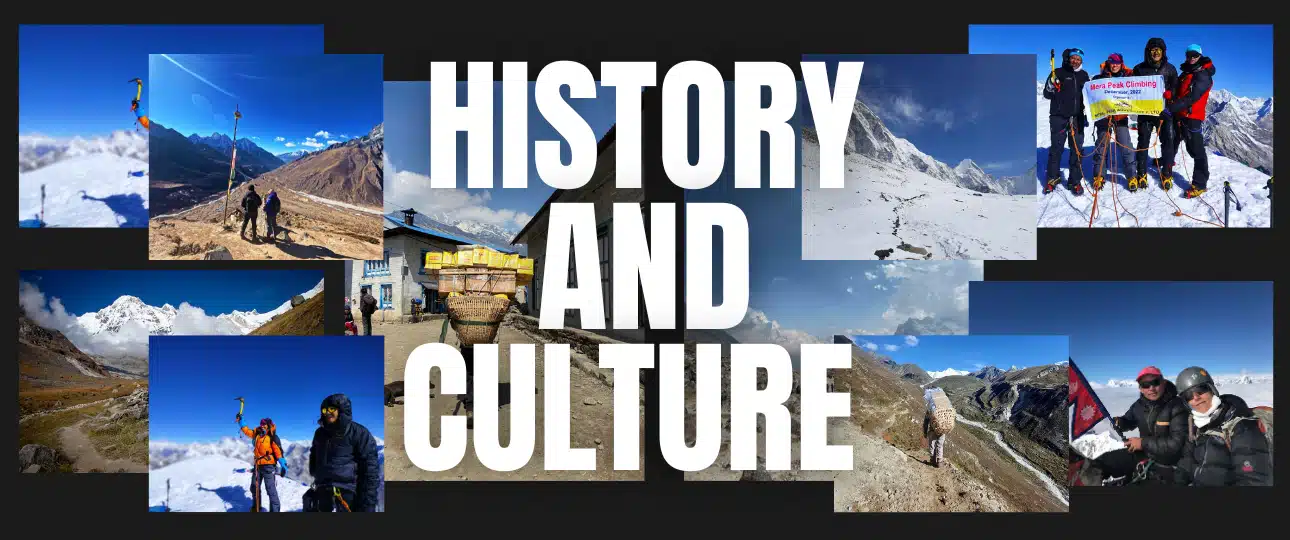The History and Culture of Peak Climbing in Nepal: Insights from a Local Guide
The history and culture of peak climbing in Nepal has a long & fascinating history, and it has evolved over time. As a local guide, I have been leading climbers for over a decade and I have seen this activity developed & changed over time. Thus, I am very excited to share insights into the history and culture of peak climbing in Nepal that you may not have known.
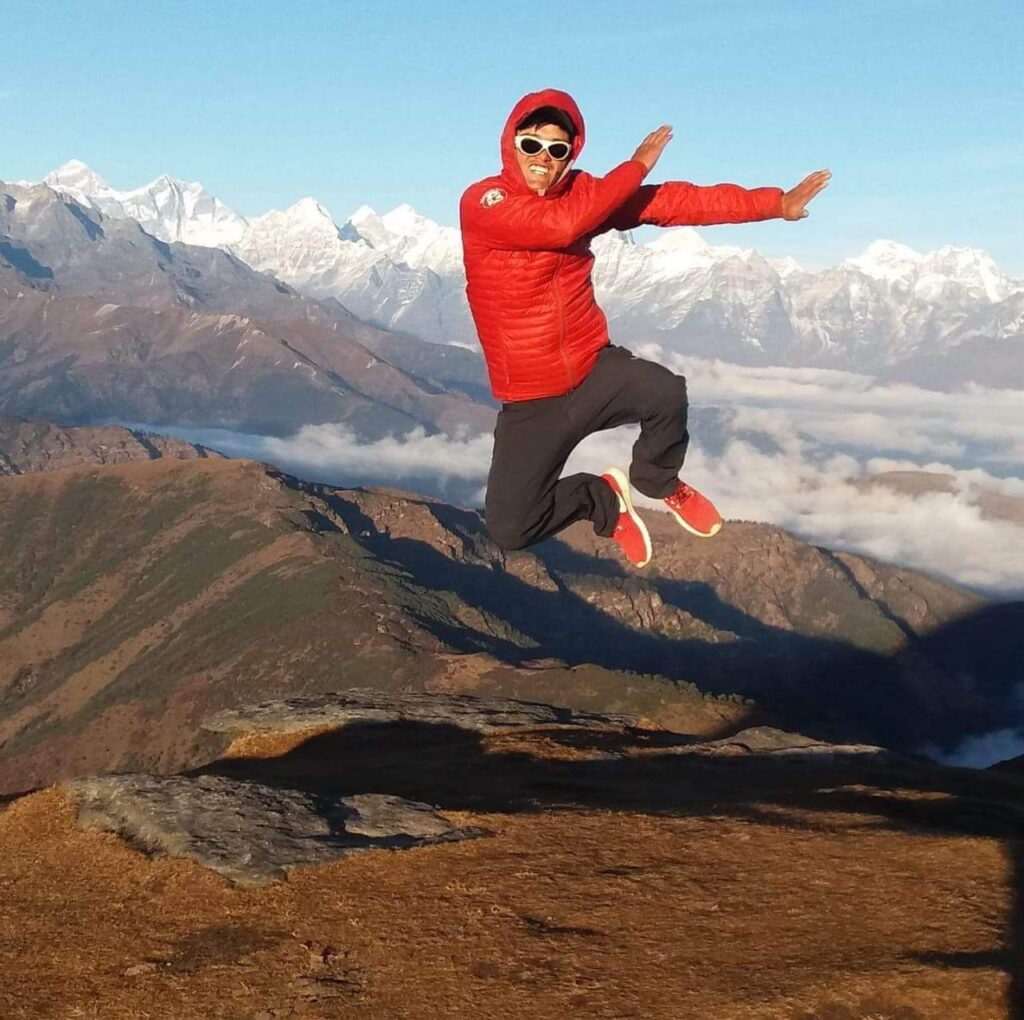
Table of Contents
Introduction to the History and Culture of Peak Climbing
Nepal is a small country located in South Asia and well known for its majestic Himalayan Mountains, including Mount Everest 8,849m, the highest peak in the world. Despite its size, Nepal is famous for trekking, peak climbing, and mountaineering activities. In fact, Nepal relies on mountain tourism as it is one of the major sources of economic growth. Similarly, all these activities first started in the 19th century & after the first summit of Mount Everest by Sir Edmund Hillary & Tenzing Norgay Sherpa.
Looking back to history, the earliest expedition to attempt a peak was an English Mountaineer George Mallory before Edmund Hillary & Tenzing Norgay. George Mallory participated in the first three British Mount Everest expeditions in 1921. Despite the expedition’s failure to reach the summit of Mount Everest, George Mallory marked the beginning of a new era for peak climbing in Nepal.
Over the years, many peaks in Nepal have been attempted to be summited by climbers over the years, ranging from very simple climbs to exceedingly challenging & technical expeditions.
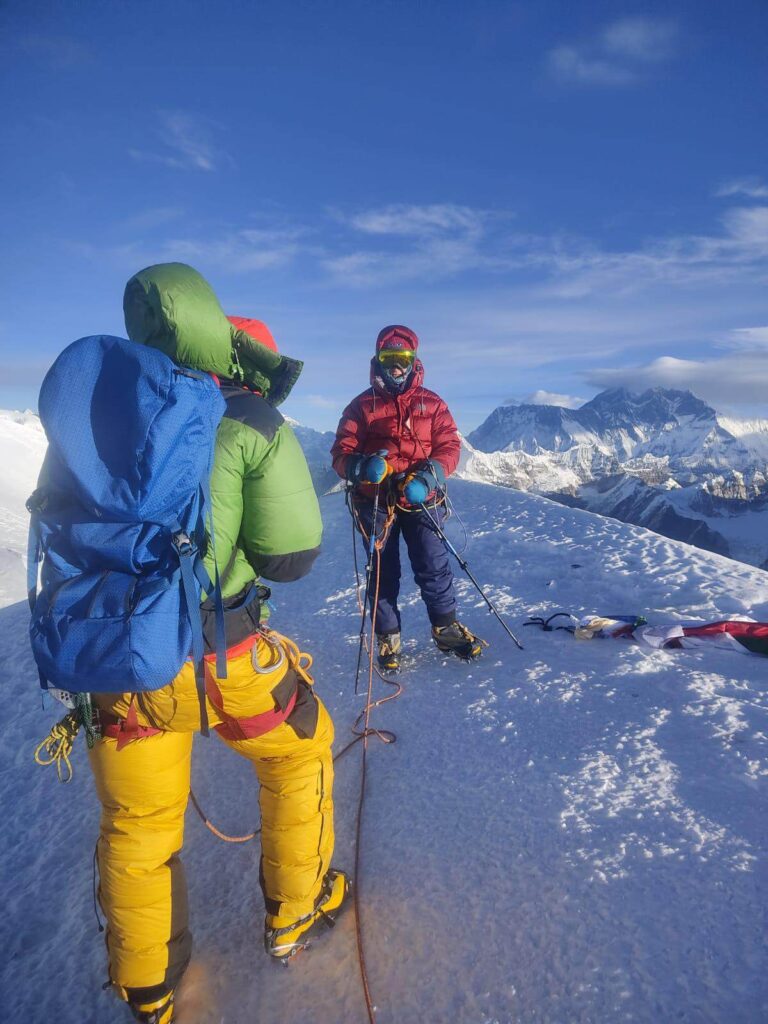
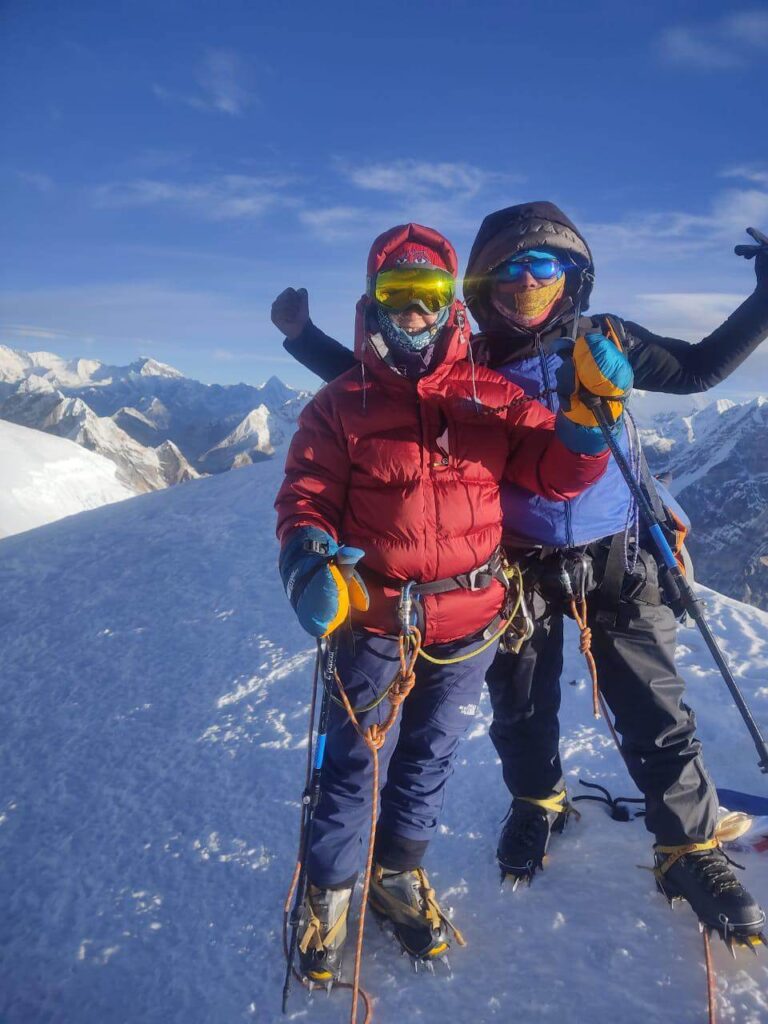
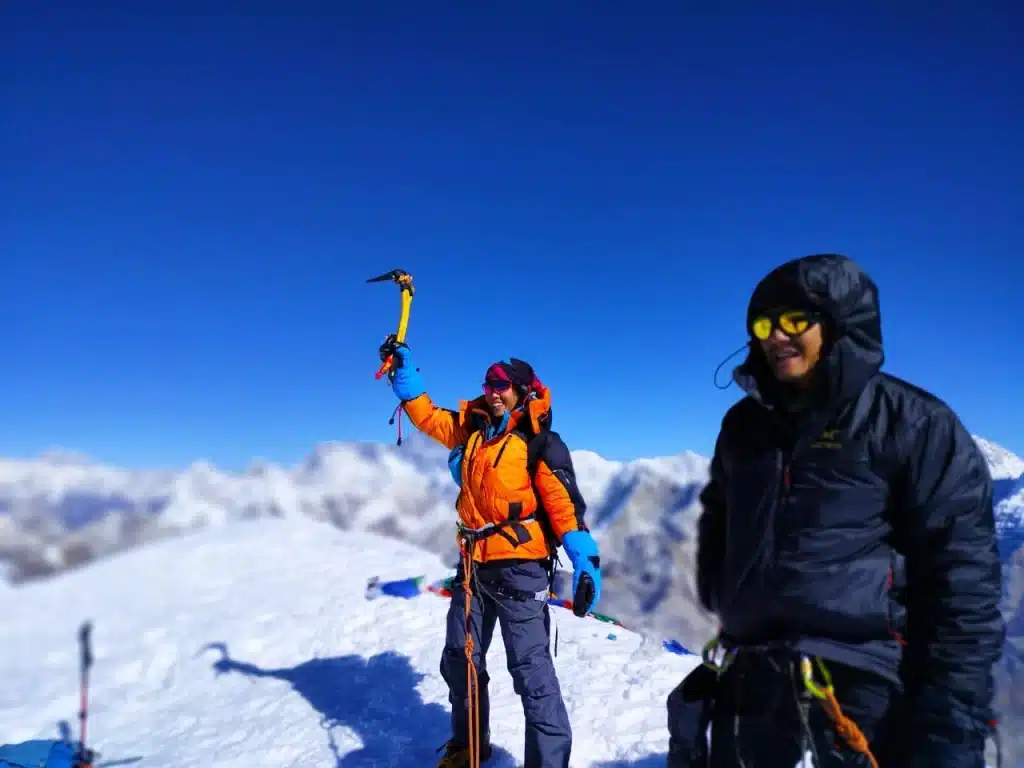
Surprisingly, among 1,310 peaks in Nepal above 6,000 meters, approximately 300 peaks are open for climbing.
The Nepal Mountaineering Association is responsible for managing & regulating the climbing of these peaks.
As a result, Nepal has become the adventure hub for all mountaineering & peak climbing activities, attracting climbers from all over the world.
Sherpa’s and the Mountain Relation: Who are Sherpas?
Who are the sherpas and why are they living in the Himalayan regions? This question is the root of the start of the mountaineering era. First of all, “Sherpa” is derived from the Tibetan words “shar” meaning “east” and “pa” meaning “people”, which translates to “People from the east”.
According to history, several centuries ago, the ancestors of Sherpas migrated from the eastern Tibetan plateau to Nepal. They relied on agriculture (potato, barley & buckwheat), animal husbandry (Yaks & Cows), and trade (salt, wool & rice) as their main livelihoods. Living in the high-altitude Himalayas, Sherpas have adapted to these high-altitude and challenging terrains.
Similarly, their bodies have undergone physiological adaptations that allow them to thrive in a low-oxygen atmosphere which makes them suitable for mountaineering or any high-altitude activities. Talking about the mountains & mountaineering activities, the first steps towards mountaineering in Nepal can be tracked way back to the 20th century.
After the first earliest attempts to Mount Everest by the British Mount Expedition in 1921, led by George Mallory the expedition marked the beginning of a new era. In 1953 on May 29, the first successful summit of Mount Everest by Sir Edmund Hillary & Tenzing Norgay Sherpa made the expedition more popular. Since then, Nepal has become a popular destination for climbers, trekkers, or any adventure seeker from all over the world.
Over the years, the Sherpas have a long history of guiding climbers & providing support for peak climbing, expedition, and trekking. Even during the first attempt at Mount Everest Expedition, Sherpas provided all the support & till today, Sherpas are well known for their incredible strength, mountaineering skills, & ability to work at high altitudes.
If you ask me about the relationship between Sherpas and the Mountains then it is clear that the mountains are the home of the Sherpas, a temple that their ancestors had always appreciated. Now, this home has become a popular place to experience challenges, adventure, and culture. Indeed, there are many ancient traditions & spiritual connections in mountaineering in Nepal.
Ancient Traditions & Spiritual Connections in Mountaineering in Nepal
Sherpas are not only popular for their mountaineering skills, nor the Mountains are only meant for challenges & adventure. There are ancient traditions & deep spiritual connections which permeate the realm of peak climbing. As climbers embark on their journeys to conquer the majestic Himalayas, they become immersed in a world where tradition and spirituality intertwine, leaving an indelible mark on their experiences.
Looking at the Sherpa communities, Sherpas have their own unique customs, rituals, and beliefs that shape their way of life. For climbers, these traditions offer a profound insight into the local culture and enrich their overall mountaineering experience. How?
The Sherpa holds a profound reverence for the peaks, considering them sacred & embodying divine spirits. The ancient practice of Buddhism has a significant influence on the spiritual landscape of Nepal. Monasteries & Stupas dot the mountainous regions, acting as spiritual havens for both climbers & villagers. The tranquil atmosphere of these sacred sites offers a respite from the physical challenges of peak climbing, allowing climbers to reflect, find inner peace, and seek blessings for a safe & successful journey.
You may not know but during expeditions in Nepal, there will be held rituals & ceremonies that pay homage to the mountains & seek blessings from the deities believed to inhabit them. Traditional Puja ceremonies will be conducted by Buddhist Monk or Lamas, which involve offering prayers, burning juniper incense, & performing sacred rituals to seek protection & good fortune.
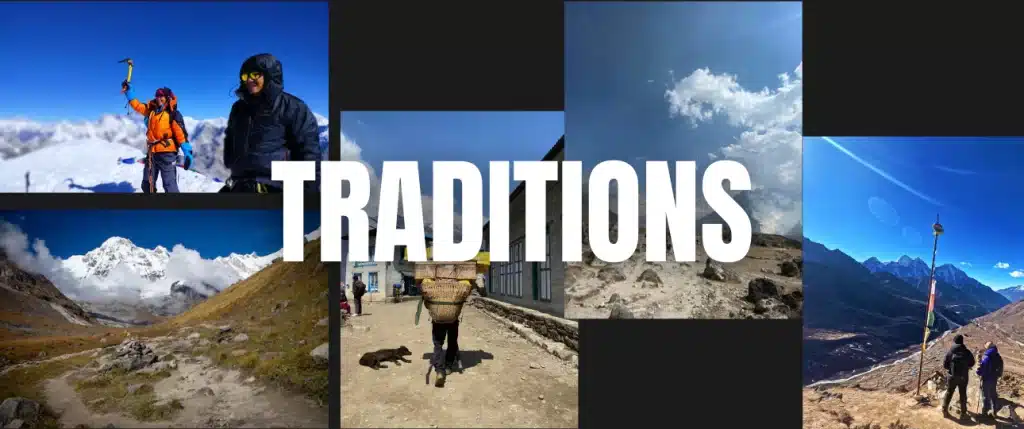
These kinds of ancient traditions & rituals show that peak climbing or mountaineering is not merely a physical endeavor but also a spiritual journey that requires respect for the natural world.
Apart from rituals & traditions, climbers also get an opportunity to experience the warmth & hospitality of the local communities. Thus, Nepal peak climbing or any mountaineering activities provides a gateway to ancient traditions, spiritual connections, & cultural immersion. Similarly, there are peaks that captivate adventurers.
Peaks that Captivate Adventurers
Nepal has always drawn adventure-seekers and adventurers from all over the world with its amazing natural beauty & towering Himalayan peaks. With its diverse range of challenging & majestic mountains, Nepal is an ideal place for climbers, mountaineers, and explorers to test the limits & conquer new heights. Let’s dive into some of the peaks that captivate adventurers in Nepal.
1. Mount Everest 8,849m and Base Camp
At 8,849 meters, Mount Everest is the highest peak in the world and the most prominent attraction of the Himalayas. With its diverse range of challenges & adventures, many people seek to conquer new heights by doing either expeditions or trekking to base camp.
The most popular trekking trail in Nepal is also the Everest Base Camp and thousands of trekkers trek to base camp annually. A normal 14 Days Everest Base Camp Trek is the best way to enjoy the base camp trek.
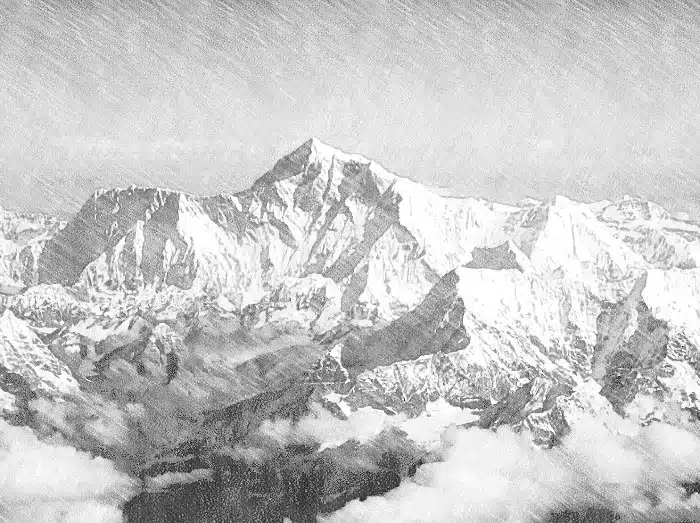
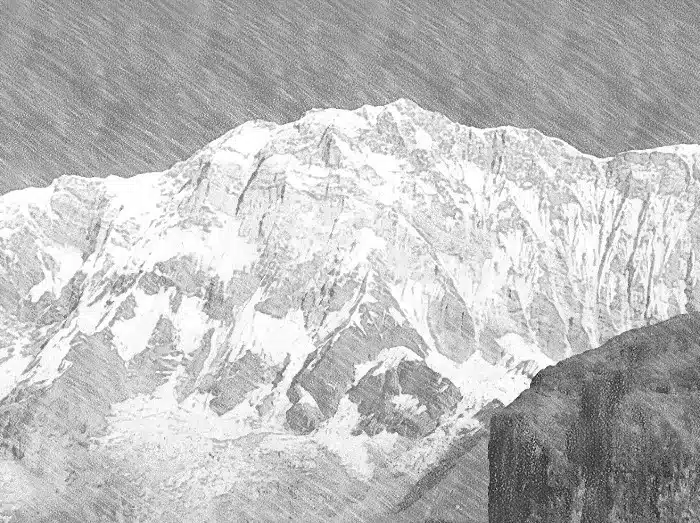
2. Annapurna I and Annapurna Base Camp
Annapurna I is the tenth-highest mountain in the world standing at 8,091m with its awe-inspiring beauty as well as its challenging terrain. Even ascending to the Annapurna Base Camp offers breathtaking vistas of snow-capped mountains including Annapurna I, Annapurna South, Macchapucchre, and Hiunchuli.
The French Annapurna expedition led by Herzog, which also included Lionel Terray, Gaston Rébuffat, Marcel Ichac, Jean Couzy, Marcel Schatz, Jacques Oudot, and Francis de Noyelle, reached the summit on June 3, 1950, with the assistance of Maurice Herzog and Louis Lachenal.
Annapurna Base Camp is also considered the second most popular trek in Nepal. The diverse ethnic communities, including Gurung & Thakalis, and their unique cultures are worth experiencing. 13 Days Annapurna Base Camp Trek is the best way to start your journey to base camp.
3. Kanchenjunga
Kanchenjunga is the third-highest mountain in the world standing at 8,586m with its untouched beauty and awe-inspiring presence. Situated in the eastern region of Nepal, Kanchenjunga offers authentic & off-the-beaten-path experiences for avid trekkers in the base of Kanchenjunga.
On 25 May 1955, Joe Brown and George Band, who were part of the 1955 British Kanchenjunga expedition first summited the sacred Kanchenjunga peak.
25 days of itinerary for Kanchenjunga base camp is the best way to enjoy this magnificent trail.
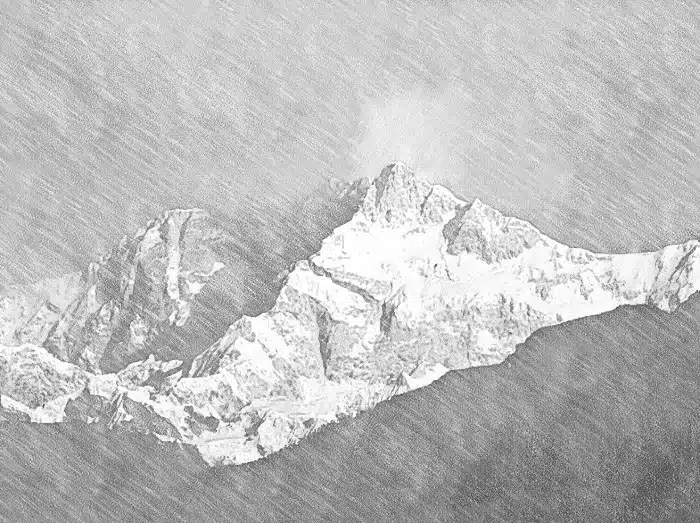
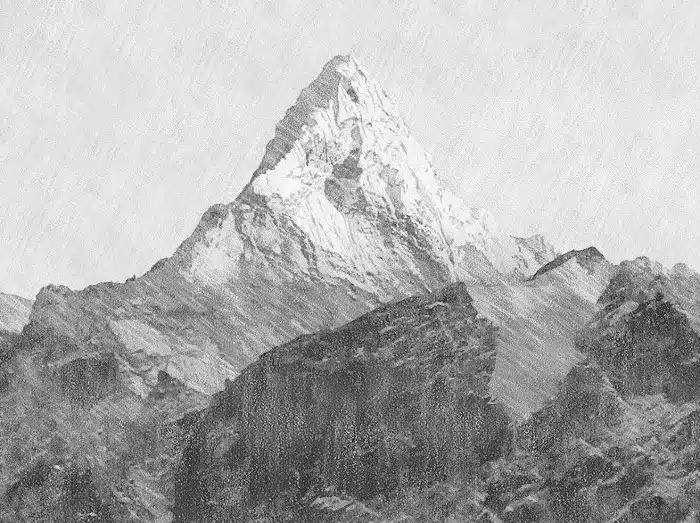
4. Ama Dablam
Ama Dablam, also known as “Mother’s Necklace” is one of the famous peak climbing in Nepal, standing at 6,812 meters. The name “Mother Necklace” symbolize the shape resembling a mother’s outreached arms, with a hanging glacier resembling a pendant. This peak is also featured in one rupee Nepalese banknote.
Similarly, the first summit was on March 13, 1961, by Mike Gill from NZ, Mike Ward from the UK, Barry Bishop from the USA, and Wally Romanes from NZ.
30 days of an itinerary for the Ama Dablam expedition is the best way to enjoy this magnificent trail.
5. Manaslu
Mount Manaslu is the eighth-highest peak on Earth, with its summit reaching 8,163 meters (26,781 ft) above sea level. Similarly, this majestic mountain stands as a formidable challenge for all mountaineers all over the world. The History of Manaslu’s Mountaineering is traced back to mid 20th century, a Japanese team led by Toshio Imanishi.
Since then, Manaslu is a coveted destination for trekkers & climbers as it is also considered an untouched trail or off-the-beaten path. 18 Days Manaslu Circuit Trek is a good way to know more about the wonders of Mount Manaslu.
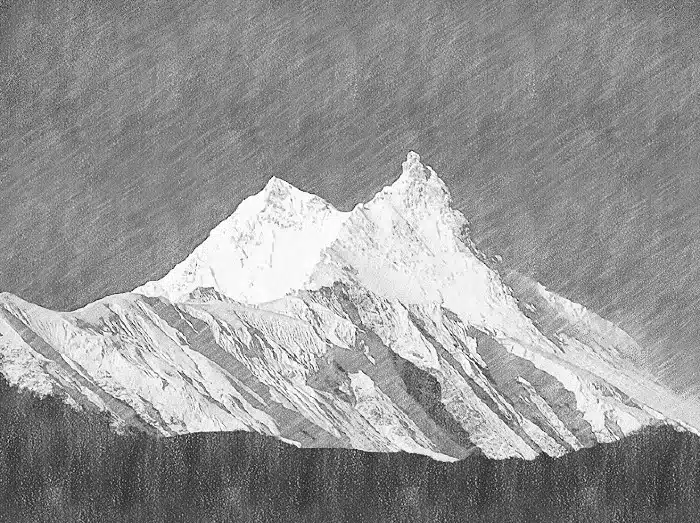
Likewise, Manaslu, Makalu, and Cho Oyu are other peaks that captivate adventurers. In terms of trekking, there are more than 44 routes in Nepal and hundreds of options for tours. Basically, each mountain presents its own unique experiences, rewards, and challenges. If you ever pick to do peak climbing in Nepal or trekking, then you won’t get regret it.
